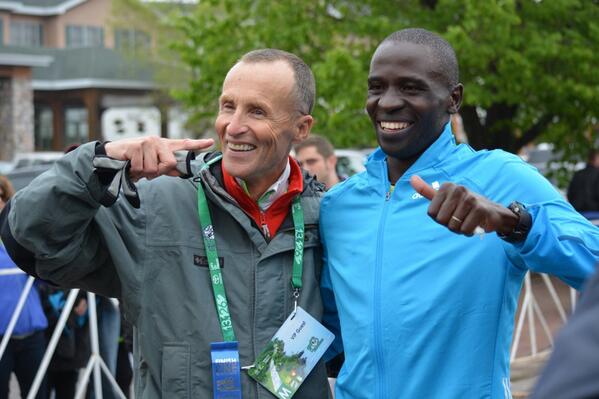 |
| Kao Sutton Photo by Tim Dahlin |
How does someone from the islands out in the Pacific end up in Northfield, Minnesota? "I was initially contacted by the coach, Donna Rask," said Sutton. "I visited and fell in love (with the school)." Carleton's reputation academically as well as their athletic program overcame the fact that Minnesota has a rather different climate than Hawaii and was far from home.
Aside from being very athletic, Sutton has high aspirations in academics. She started out on a "pre-med track," but got interested in geology. She intends to go to grad school pursuing a public health curriculum with both geology and medicine still in the picture. Sutton is used to doing more than one thing. As an athlete in Hawaii she threw the shot and discus in track, ran cross country in the Fall, played basketball and wrestled. Those were just her school sports as she also did outrigger canoe racing and rodeo riding.
The affinity for horses came naturally as her family leased a ranch with horses and cattle. So, she learned to ride, to herd cattle, and live off the land. As evidenced by the variety of activities she was engaged in, she liked being busy and she was not just a participant, but also a success. In Hawaii they have island championships, and those who win the island titles compete against the champions from the other islands for the Hawaii State titles.
Kao was discus champion three years in a row on the Big Island, as well as the two time shot put champion. In her senior year, she won the Hawaii State championship. That success gave her the confidence to be able to look beyond the islands to the mainland, but not without some trepidation. "I ended high school on such a high note(in track)," she said. "But I wasn't sure how I would fare (in college). Wasn't sure what to expect. We don't have many people who go to college (on the mainland). So I was a little bit intimidated."
Sutton was not an instant success, but she performed well enough to build her confidence as the years rolled past by steadily improving. And, another reason for coming to Carleton, there was a six week break during the winter where she could go back home. She didn't do that every year, but enough to get back to her roots, yet still pursuing more advancement, more improvement when she got back and indoor track began. She thought about doing other sports, but only wrestling, and that was a non-starter because the school does not have a wrestling team.
"It was this year that things came together," said Sutton. She worked with strength and conditioning coach Jim Jarvis to better prepare physically. "I learned how to better manage my time...was better at taking care of my body...I got over a lot of mental barriers. My main problem was overthinking, lack of confidence in my abilities."
Sutton and Jarvis met at the beginning of the season and began to map out a plan. Weightlifting. Speed work. Conditioning. "My quickness, my strength, and my speed went up dramatically," said Sutton of the results of the program. (Coach Jarvis) basically took it upon himself to learn my event." He adapted the workouts to what he believed she needed to improve.
Jarvis and Sutton worked on her weaknesses, dealt with some back problems, and adjusted the program to meet those needs. "The season, as a whole, was fantastic," said Sutton. "I was fortunate enough to be team captain. Everybody kept building off each others' success. (That helped them to) compete at a new level. A level I didn't think it could (achieve). (We had a) positive attitude."
A tragedy involving three Carleton students, who were killed in a car accident in February, also brought the whole school together, said Sutton. Everyone supported everyone else to get them through the tragedy, she said. "Just great people," she said of her teammates who were impacted and pulled together and helped each other cope.
Team members dedicated their efforts to the memory of the three men who died. Out of tragedy came a commitment to leave a legacy of sorts. For Sutton this was also her last season. This was going to be my last time," she said. "I wanted to remember it." She wanted to finish successfully. Ranked in the top three going into the NCAA meet, she knew she had a chance at finishing on the podium, but place was not her goal, her focus.
"I'm going to throw as close to perfect technique as I can," Sutton set as her goal, figuring that if she did that nothing else really mattered. "(I) went into the competition not thinking about placing, not paying attention to what anybody else was doing, just concentrating on having as perfect form as possible.
"I felt good from the beginning, and I came away (from the competition) knowing I did everything I could technique wise." And well enough to be the national champion.






+(1).jpg)
.jpg)





.jpg)






.jpg)




















.jpg)






